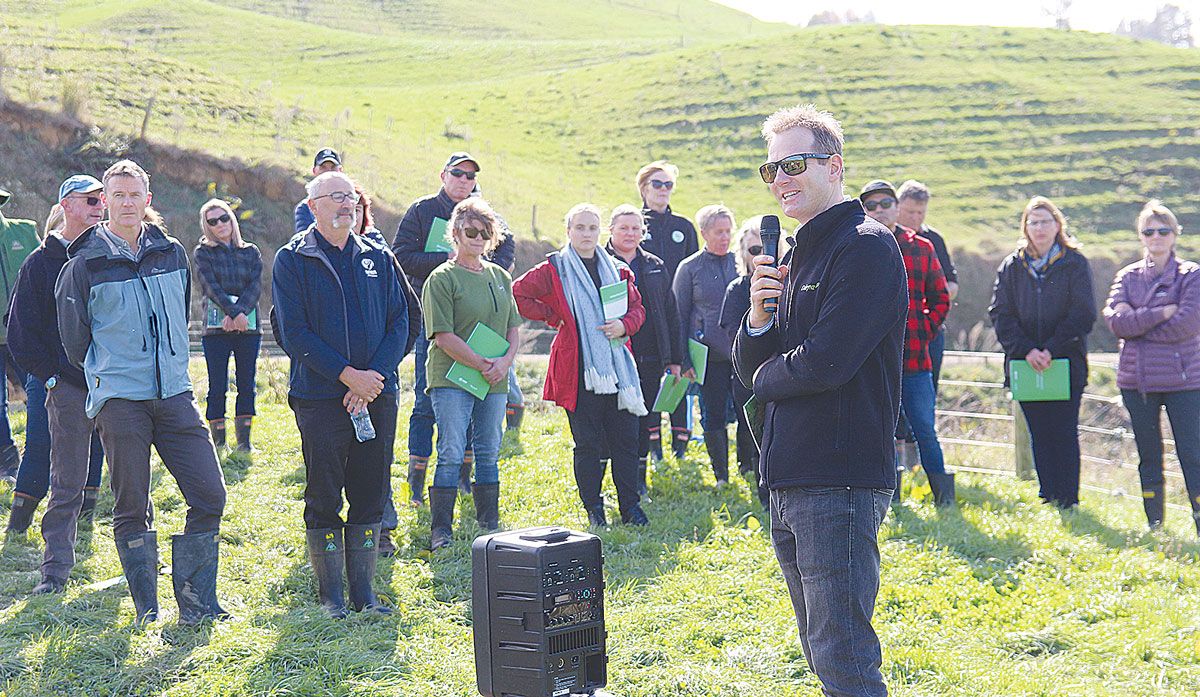Rewarding farmers who embrace sustainability
Winners of DairyNZ’s Sustainability and Stewardship awards in the Ballance Farm Environment Awards have their eyes firmly fixed on progressing a positive future for New Zealand dairy.
DairyNZ and NIWA have joined forces to help farms with wetland design and performance.
The new Wetland Practitioner Guide - Wetland Design and Performance Estimates was recently launched at a Waikato dairy farm which features as a case study.
DairyNZ's Waikato Dairy Environment Leaders joined the launch to learn more about the benefits of wetlands.
DairyNZ general manager for sustainable dairy, Dr David Burger, says as farmers increasingly look to protect and develop wetlands, advice is often sought on how to design wetlands to maximise their performance.
"With more farmers looking to reduce their environmental impact, there's growing interest in re-establishing and constructing new wetands," says Burger.
"We know wetlands can significantly reduce nutrient and sediment losses on farms. They also provide habitat for bird and fish, improve biodiversity and help create an attractive farm environment."
In 2015, with funding from the Waikato River Authority, Gray and Marilyn Baldwin developed a wetland on their 713 hectare, 850 cow dairy farm near Putaruru in South Waikato.
The Waikato River Authority, DairyNZ, NIWA, Opus, Hill Laboratories, and Waikato Regional Council worked together with the Baldwin Family Trust on the project. The aim was to improve knowledge of wetland design and performance and share this with Waikato farmers and the community.
Over 12,000 native plants were planted at the site by local community groups.
"Our farm is located in the Upper Karapiro catchment, which is one of the more sensitive ones in the Waikato region, as it drains into the Karapiro," says Gray Baldwin.
"We want to improve local waterways and we see the wetland as being important to the whole catchment. It is a taonga."
 |
|---|
|
DairyNZ's David Burger speaks to the group at the Baldwin Family Trust's wetland in South Waikato. |
The family are pleased to see biodiversity in the area improving and native birds flourishing.
With funding from DairyNZ, NIWA scientists monitored water flows and contaminant concentrations to assess the Baldwin's wetland performance.
Despite its relatively small size (around one percent of the farm catchment area), good design and extensive planting means the wetland removes around 60% of nitrogen, 70% of sediment and 20% of phosphorus from the water it receives.
The new guidelines highlight that as wetlands increase from one to five percent of a catchment area:
The guidance is the result of a four-year project between DairyNZ and NIWA, with input from many other organisations, including regional councils and Fish and Game NZ.
NIWA's principal scientist - aquatic pollution, Dr Chris Tanner says the guidelines are designed for practitioners, but also provide evidence for farmers and councils of wetland effectiveness in removing contaminants.
"The estimates are based on over 20 years of New Zealand study and international field-scale monitoring and modelling studies.
"Estimates were then refined, tested and endorsed by a technical advisory group supporting the project."
Burger says farmers who are interested in constructing wetlands can contact an environmental consultant to work through the new guidance. Farmers should also seek regional council advice on consents and any assistance available.
Trade Minister Todd McClay says New Zealand has no intention of backing down in a trade dispute with Canada over dairy products.
There have been leadership changes at the Hamilton-based Dairy Goat Co-operative, which has been struggling financially in recent years.
Horticulture NZ chief executive Nadine Tunley will step down in August.
OPINION: In recent years farmers have been crying foul of unworkable and expensive regulations.
Another 16 commercial beef farmers have been selected to take part in the Informing New Zealand Beef (INZB) programme designed to help drive the uptake of genetics in the industry.
Trade Minister Todd McClay says Kiwi exporters will be $100 million better off today as the NZ-EU Free Trade Agreement (FTA) comes into force.
OPINION: Canterbury milk processor Synlait is showing no sign of bouncing back from its financial doldrums.
OPINION: It seems every bugger in this country can get an award these days.